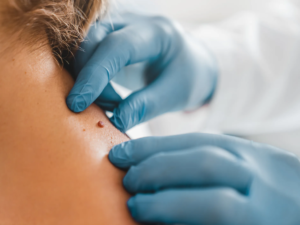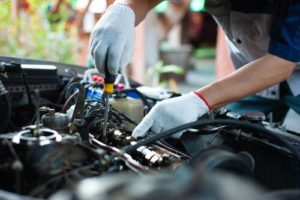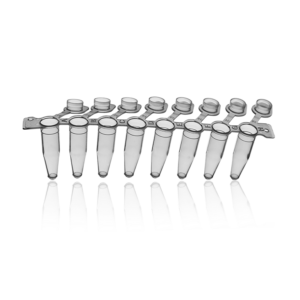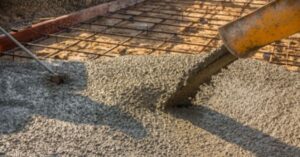Siding not only defines a home’s overall look, but also serves to protect the structure from harsh sun and heat, torrential rain and heavy snow. It also offers a variety of insulation options to help reduce energy costs.
Various siding materials include board and batton, clapboard, fascia, furring strips and more. Some offer additional benefits like rot and termite resistance. Contact Charleston Siding Pros now!

Wood siding has long been a popular option for homeowners. With an array of different types and styles to choose from, this material allows you to add a rustic or elegant look to your home’s exterior, while also providing superior insulation. However, the type of wood you choose will greatly impact your siding’s performance. Cedarwood is an excellent choice, as it naturally resists rot and is unattractive to termites. It’s also a durable material that won’t warp or crack as easily as other types of wood, and it can last 30 years or more with regular maintenance.
Ash is another great option, as it is dense and resistant to rotting and insect infestation. It’s also a good choice for types of siding that require milling, like tongue-and-groove, and it can be stained or painted to match your aesthetic. Fir is another popular option for wood house siding, as it’s easy to cut and has little sap or resin that can clog saw blades. It’s a good choice for cabin-style homes, as well as drop channel siding, which offers a sleek, streamlined appearance and provides extra insulating value.
Garapa is a growing favorite amongst homeowners due to its durability and resistance to water damage, while also being highly insect-resistant. It’s an excellent choice for warmer climates, as its light color pigments help reflect sunlight and keep the home cool. Garapa is also relatively easy to work with and requires minimal maintenance. Some manufacturers offer a wood treatment called shou sugi ban, which is the traditional Japanese process of charring timber to make it more durable and give it a striking burnt texture and black color.
Vinyl
Vinyl siding, made from polyvinyl chloride (PVC), is an affordable choice that looks much like painted clapboard or shingle siding. It’s lightweight, fade-resistant, and offers a wide range of colors and textures. However, it’s important to understand that it can look rundown if not maintained properly.
Vinyl has become the go-to for many homeowners due to its low initial costs and relatively simple maintenance requirements. It’s a durable and long-lasting product that can stand up to heavy winds, hail, and excessive moisture. However, vinyl can still be susceptible to damage if it’s not installed properly or the wrong product is used.
Typically, the first step in installing vinyl is to apply a water-resistive barrier. This stops incidental water from penetrating the house and causing damage. In addition, code-compliant flashing must be installed to prevent water infiltration around windows and doors.
The next step is to determine the lowest point of the wall that needs sided. It’s important to make sure the surface is flat and level for proper installation. It’s also recommended to install a vapor barrier underneath the vinyl, and a thermal break around the house’s foundation to reduce air infiltration.
When fastening vinyl, it’s important to use ‘loose’ nails to allow for expansion and contraction with varying weather conditions. Over tightening can cause the vinyl to pull away from the house and leave gaps that allow water to infiltrate and create other problems, such as mold, mildew, or rot.
It’s a good idea to buy extra vinyl material to allow for waste during the installation process and for future repairs. It’s also a good idea to consult a professional prior to selecting the perfect style for your home. This professional will be able to help you find the best color to match your neighborhood and your personal style.
Aluminum
Aluminum siding is a popular option for homeowners who are looking to clad their homes in a durable and attractive material. This is because aluminum is a tough, lightweight material that can resist damage caused by harsh weather conditions. It is also easy to install, making it a cost-effective alternative to other types of siding.
Unlike steel, aluminum doesn’t rust, so you don’t have to worry about it being damaged by rain or high humidity. And unlike vinyl, aluminum can withstand strong winds without the panels being ripped off the home. Aluminum is available with a smooth or natural-looking wood grain finish, so it can provide a modern or traditional aesthetic for the home. In addition, it’s easier to maintain than other materials, such as vinyl. This is because aluminum doesn’t have to be painted as often as other siding options, since the color goes all the way through the material.
One drawback of aluminum is that it can crack, dent and scratch, which can be a problem for some homeowners. However, this can be corrected by installing a thicker gauge of the material. Thicker siding is more resistant to damage and provides better insulating properties that can save money on energy costs in the long run.
Another benefit of aluminum siding is that it’s a sustainable and environmentally-friendly material. It can be recycled again and again, unlike vinyl, which is only good for a single cycle of recycling before it ends up in landfills, where it pollutes the environment with harmful chemicals. It is also fire-resistant, which is a huge advantage in areas with wildfire risks. However, it is important to note that while aluminum does have many benefits, it is not maintenance-free. It still needs to be repainted periodically, just like other siding materials do.
Steel
Steel siding is traditionally found on commercial buildings, but it has become a popular alternative for homeowners who prioritize durability and aesthetics. It can withstand severe weather conditions and pests, as well as offer resistance to fire. It is also an excellent choice for builders who are looking to maximize energy efficiency. Steel siding is available in a variety of styles, including panels that resemble logs for a rustic cabin look. It can be painted to match any color or design, and may come with a wood-like texture that provides more contrast with light and shadow than standard vinyl or wood siding options.
Steel panels do not deteriorate as easily as other types of siding, which helps minimize maintenance requirements and saves money in the long run. Homeowners can typically expect to get 50 years out of steel siding before it needs panel replacement, whereas wood or vinyl may last between 40-60 years. Steel is a more durable option than aluminum, and manufacturers may provide a warranty that covers issues like cracking, chipping, peeling, chalking, and fading. Quality Edge, for example, offers a lifetime warranty on its TruCedar steel siding products.
In addition to the longevity and durability of steel siding, it is highly recyclable, which can help reduce environmental impact. It is also easy to maintain, with mild soap and water usually sufficient to keep it looking new. Because it is more durable than other types of siding, steel can withstand heavy impacts from hail or flying debris, making it an excellent choice for homes in areas prone to harsh weather conditions.
Composites
Composite siding is a newer alternative to vinyl and wood. It’s engineered to withstand harsh weather conditions, resist pests and rot, and maintain its appearance with minimal maintenance.
Like wood, it is available in a wide variety of colors and styles. It is also easy to paint, allowing homeowners to refresh the look of their home with little hassle.
In addition to being water resistant, composites can withstand high temperatures and are often fire-rated. This feature is particularly beneficial for those in areas prone to wildfires.
Composites are also designed to resist rot, mold, mildew, and other environmental factors that can damage traditional siding materials. They’re typically built with reinforced cores, and many manufacturers use advanced technology to create a durable surface that’s resistant to impact and abrasions.
Unlike traditional wood, which can attract termites and other pests, composites are often infused with anti-termite additives. Additionally, some manufacturers utilize a protective coating to prevent damage from insects and moisture.
Many homeowners choose to install composites because they are long-lasting and can withstand harsh weather conditions. This durability means fewer repairs and replacements, saving homeowners money in the long run.
One of the biggest benefits of composites is that they’re more eco-friendly than vinyl and wood alternatives. Manufacturers use recycled materials and efficient production processes to minimize energy consumption and reduce waste. In addition, most are devoted to sustainability and use yearly audits to ensure compliance with environmental regulations.








